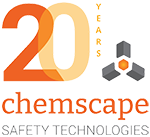GHS Implementation with WHMIS 2015
Understanding the Changes to WHMIS 2015 and the Implementation of Globally Harmonized Systems (GHS) in Canada
After many years of discussion, Canada is aligning the Workplace Hazardous Materials Information System (WHMIS) with the international standard of the Globally Harmonized System of Classification and Labelling of Chemicals (GHS). The old WHMIS will be known as WHMIS 1988 and the updated WHMIS with GHS will be called WHMIS 2015.
When Did WHMIS 2015 Come into Effect?
The final Hazardous Products Regulations (HPR) were published on February 11, 2015 in the Canada Gazette, Part II. The provinces across Canada are rolling out their WHMIS legislation. Employers will need to be fully transitioned to WHMIS 2015 by Dec. 1, 2018.
| Transition Timeline | Time Period | Manufacturers & importers | Distributors | Employer |
|---|---|---|---|---|
| Phase 1 | Feb. 11, 2015 to May 31, 2018 |
WHMIS 1988 Or WHMIS 2015 | WHMIS 1988 Or WHMIS 2015 |
Consult your Federal/ Provincial/ Territorial OSH Regulator |
| Phase 2 | June 1, 2018 to Aug 31, 2018 |
WHMIS 2015 | WHMIS 1988 Or WHMIS 2015 |
WHMIS 1988 Or WHMIS 2015 |
| Phase 3 | Sept 1, 2018 to Nov. 30, 2018 |
WHMIS 2015 | WHMIS 2015 | WHMIS 1988 Or WHMIS 2015 |
| Completion | Dec. 1, 2018 | WHMIS 2015 | WHMIS 2015 | WHMIS 2015 |
What do I need to do as an employer to be compliant with WHMIS 2015?
Under WHMIS 2015, employers will continue to:
- Educate and train workers on the hazards and safe use of products.
- Ensure that hazardous products (formerly Controlled Products) are properly labelled.
- Prepare workplace labels and safety data sheets (SDSs formerly MSDSs) as necessary.
- Provide access for workers to up-to-date SDSs and labels.
How GHS has changed WHMIS 2015:
GHS has the following significant changes that are different to WHMIS 2015:
- Controlled Products are now called Hazardous Products
- Different Hazard Classes and more of them.
- Different Classification of Chemicals New Safety Data Sheets (SDSs) with 16-sections
- No requirement to update SDSs every 3 years (some provinces like BC under WHMIS 2015 require employers to check with the supplier that they have the most current SDS for the product).
- New Supplier Labels
- New Pictograms Click to see a PDF of the new WHMIS 2015 pictograms.
Hazard Classification under WHMIS 2015
Most of the hazard classes in WHMIS 2015 are common to GHS; this means they will be used worldwide with other countries that have adopted GHS. There are a few classes that are specific to WHMIS 2015 like the biohazardous infectious materials symbol and class that signifies organisms or toxins that cause disease in people or animals (i.e HIV, Hepatitis, Salmonella).
Hazard Groups Under WHIMIS 2015
WHMIS 2015 classifies by assigning a product to a group and then to a category and finally a class. WHMIS 2015 has two major hazard groups:
- Physical Hazards Group: chemicals in this hazard group present significant physical danger. Products are classified based on their physical state (solid, liquid, gas) and physical properties (explosive, flammable, corrosive).
- Health hazard Group: chemicals in this hazard group present health danger either in the short term or long term.
There is also a third GHS group called the Environmental Hazards Group that was not adopted by Canada or the USA; those countries use other regulations for the environment. A product can have more than one hazard group classification.
Example: Methanol Classification
|
Group |
Class |
Category |
|
Physical Hazard |
Flammable liquid |
2 |
|
Health Hazard |
Acute toxicity (Oral) |
3 |
|
Health Hazard |
Acute toxicity (Dermal) |
3 |
|
Health Hazard |
Acute toxicity (Inhalation) |
3 |
|
Health Hazard |
Eye Irritation |
2B |
|
Health Hazard |
Reproductive toxicity - Effects on or via lactation |
1A |
|
Health Hazard |
Specific target organ toxicity (single exposure) |
1 |
WHIMIS 2015 Symbols
Health Hazards
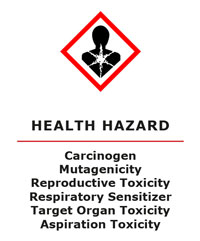
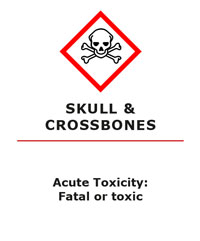
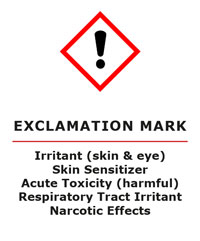
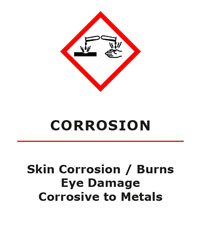
Physical Hazards
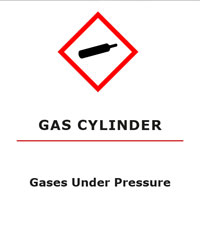
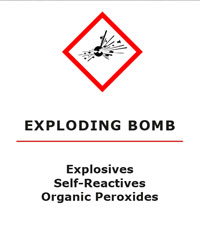


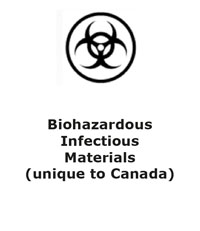
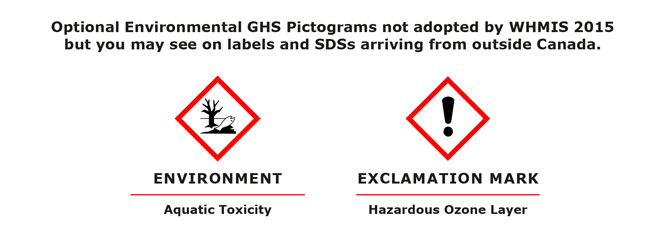
WHMIS 2015 and the GHS Hazard Pictograms
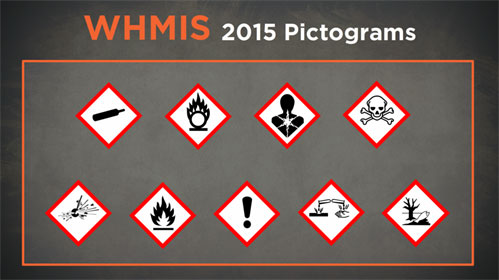
Enhance Workplace Safety with Chemscape’s WHMIS Online Training Course
WHMIS 2015 with GHS is a comprehensive online course authored by Chemscape that covers all the essential elements of the new WHMIS 2015 with GHS. Contact us Toll Free at 1-855-720-6737 or by email sales@chemscape.com to learn more about our GHS Transition Solutions and getting your workers WHMIS and GHS certified.
What Our Clients Say



